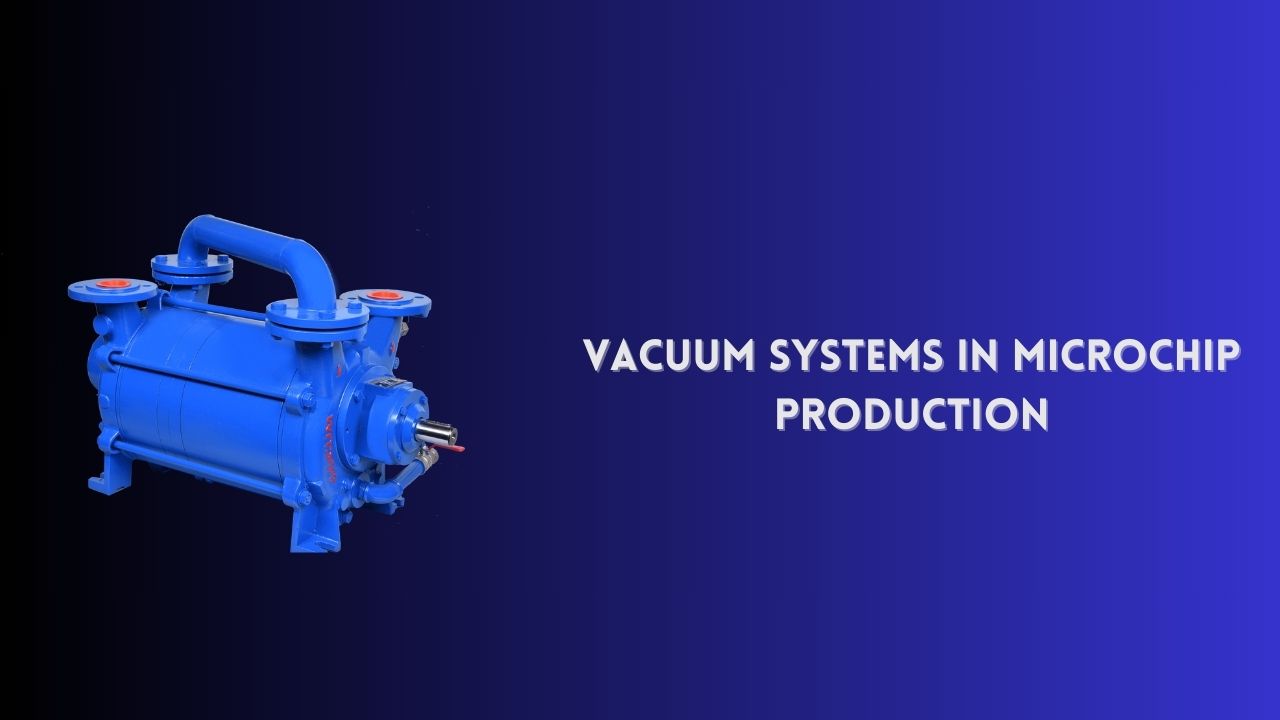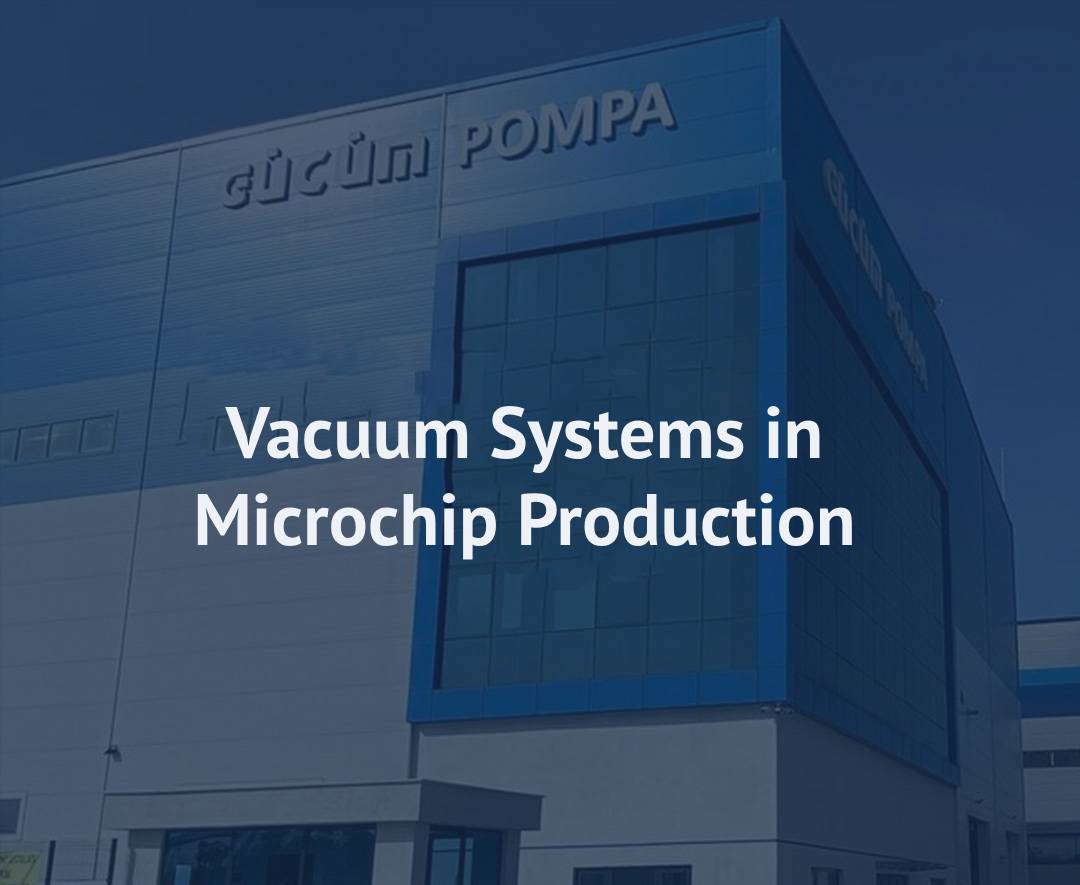Vacuum Systems in Microchip Production
Vacuum Systems in Microchip Production
Microchip production is one of the most critical manufacturing processes in today’s technology world. Microchips are at the heart of electronic devices such as computers, phones, televisions, automobiles, and more. The production of these chips is a highly sensitive and precise process. Vacuum systems used in microchip production play a critical role in enabling this precision by performing many tasks under low pressure, reducing processing errors, increasing efficiency, and improving the quality of the chips. This article explores the importance, working principles, applications, and effects of vacuum systems in the production of microchips.
The Microchip Production Process and the Importance of Vacuum
Microchip production is a multi-step, highly technical process that requires great precision. It involves four main stages: photolithography, thin film coating, etching, and adding final layers. Each stage heavily relies on vacuum technology. Vacuum environments enable specific outcomes in each process, including the coating of materials, the spread of thin layers, and the formation of precise patterns, all of which are crucial for high-quality microchips. Vacuum systems ensure that each of these steps is performed efficiently and accurately.
Vacuum systems play a crucial role in every step of microchip manufacturing. For instance, during material deposition, if the environment is not properly controlled, air pressure and gases can affect how materials settle on the chip surface. By maintaining a vacuum, these external factors are controlled, and processes can be executed more accurately. This results in microchips being produced with fewer defects and higher precision.

Types of Vacuum Systems and Their Role in Microchip Production
Vacuum systems used in microchip production come in a variety of types, each tailored to different functions and stages of the manufacturing process. Below are the main types of vacuum systems commonly used in microchip production:
Rotary Pump
Rotary pumps are among the most widely used vacuum systems for achieving low to medium vacuum levels. These pumps are highly efficient for processes such as evaporation and thin film coating. Rotary pumps are reliable, cost-effective, and require minimal maintenance, making them a popular choice for microchip production environments.
Diffusion Pump
Diffusion pumps are used for achieving high vacuum levels. They work by using heated fluid to condense gas molecules, pushing them out of the system. Diffusion pumps are essential for high-precision operations in microchip production, such as photolithography and etching, where very low pressure levels are required. These pumps help ensure the accuracy of intricate processes by providing a controlled environment with low gas density.
Ion Pump
Ion pumps are used for ultra-high vacuum applications, where the pressure levels need to be reduced to extremely low values. These pumps work by ionizing gas molecules and using an electrical field to remove them from the vacuum environment. Ion pumps are highly effective for high-precision processes, such as those involved in electron beam lithography and advanced material research. By achieving ultra-low pressures, ion pumps ensure the highest level of cleanliness and precision during the production of microchips.
Vacuum Systems in Microchip Production Processes
Vacuum systems are used throughout the entire microchip production process, playing key roles in various stages. The following are the main processes in which vacuum systems are essential:
Photolithography
Photolithography is one of the most critical steps in microchip production. During this phase, patterns are transferred to the chip’s surface. Vacuum environments are necessary in photolithography to control the distance between the photomask and the light source, as well as to prevent unwanted light scattering. By using a vacuum, the process becomes more precise, and the patterning on the chip is much more accurate, ensuring that the distances between different components are exact.
Thin Film Coating
Thin film coating is used to deposit thin layers of materials onto the microchip surface. During this process, a vacuum is essential to achieve uniform coating and prevent air contaminants from interfering with the deposition. Vacuum systems ensure that the materials adhere to the chip surface in a controlled manner, which is vital for the chip’s performance. These thin films provide essential properties, such as electrical conductivity, that are needed for the microchip’s functionality.
Vapor Deposition
Vapor deposition is another critical process in microchip manufacturing. In this method, materials are vaporized and deposited onto the chip surface in a vacuum environment. The vacuum helps lower the evaporation temperature and ensures that the material is evenly distributed. This process is key to ensuring that the layers of material applied to the microchip are homogeneous, which is crucial for the chip’s performance and reliability.
Etching
Etching is used to remove unwanted material from the chip’s surface to create precise patterns and features. In this process, a vacuum environment is necessary to control the chemical reactions involved. The vacuum ensures that the etching chemicals react with the material in a controlled and clean manner. By using vacuum systems, the etching process can be performed more accurately, leading to cleaner chip surfaces with fewer defects.
Choosing and Maintaining Vacuum Systems for Microchip Production
Selecting the right vacuum system for microchip production is essential for achieving the best results. The vacuum system must be capable of achieving the required pressure levels for each stage of production. Additionally, the system should be designed to handle the specific processes used in microchip manufacturing, whether it’s photolithography, vapor deposition, or etching. Regular maintenance is also crucial to ensure the vacuum system operates at optimal efficiency. Tasks such as oil changes, filter replacements, and leak checks are essential for keeping the system running smoothly and preventing costly downtime.
Vacuum systems play a pivotal role in the production of microchips, ensuring precision, efficiency, and high-quality outcomes. They are essential for various processes, including photolithography, thin film coating, vapor deposition, and etching. By providing a controlled environment with low pressure, vacuum systems enable these complex tasks to be carried out with high accuracy. As technology continues to evolve, so too will the role of vacuum systems in microchip production. These systems will continue to help push the boundaries of microchip size, performance, and speed, contributing to the advancement of technology in many fields.
